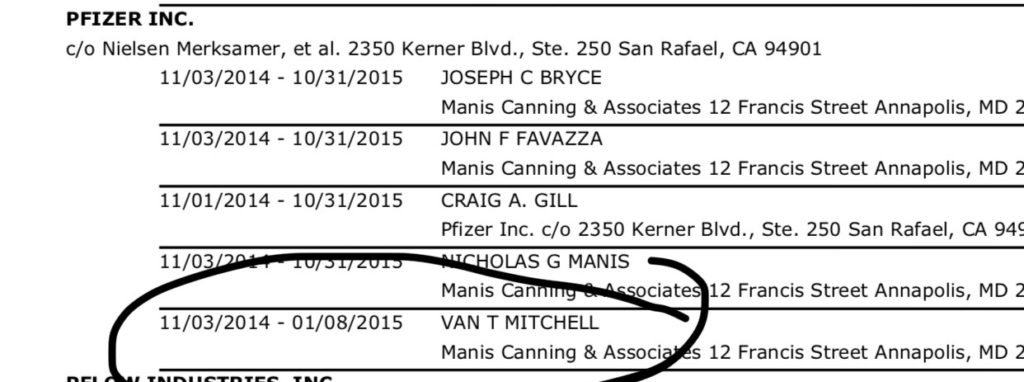Speaker Adrienne Jones and Senate President Mike Miller have appointed Van Mitchell, one of the most experienced and trusted Marylanders on health care policy, to the Prescription Drug Affordability Board. Unfortunately, Mitchell also has conflicts of interest that would give most pause before making the appointment.

Van Mitchell is awash in valuable experience for his new position on the Prescription Drug Affordability Board. A former Democratic legislator from Charles County, Mitchell served on the appropriations committee and understands the importance of health care in balancing the state budget. Known as a bipartisan, straight shooter, Mitchell also served as principal deputy health secretary under Gov. Bob Ehrlich and later as secretary of health during the first two years of Gov. Larry Hogan’s first term.
But Mitchell worked as a lobbyist between his two stints at the Department of Health. He joined Cornerstone Government Affairs shortly after leaving the Hogan administration. Records reveal that Mitchell represented Pfizer, a major pharmaceutical manufacturer, in 2014 and 2015.
Though Mitchell is not currently representing drug companies, one of his colleagues at Cornerstone, former Montgomery Sen. P.J. Hogan, does. Hogan currently represents AstraZenaca, Biotechnology Innovation Organization, and Johnson & Johnson. As a result, Mitchell is part of a firm that has a financial interest in pro-pharma outcomes.

None of this means that Mitchell might not be an outstanding member of the Board. He has direct political, administrative and legislative knowledge on this issue. He is also seen by a variety of different actors as someone who is trustworthy and tells it like it is.
At the same time, these are the sort of conflicts that normally raise red flags. No doubt it is exactly these sorts of connections that make progressives suspicious about the health care industry’s tentacles in health care public policy. Nevertheless, Mitchell made the right noises about drug prices in Jones and Miller’s press release.
Some might make the case that these sorts of problems plague anyone who has been deeply involved with an issue for decades. Many would argue that this shows why these officials should be prohibited from lobbying but others would contend that these limits drive people out of public service.
Except that not everyone becomes a lobbyist for the industry they used to oversee after they leave the legislature or administration. While Mitchell knows a lot and is trusted by Democrats and Republicans alike, Democrats would go banana cakes, to borrow one of Adam Pagnucco’s favorite expressions, if Republican Gov. Hogan appointed someone with these conflicts.
